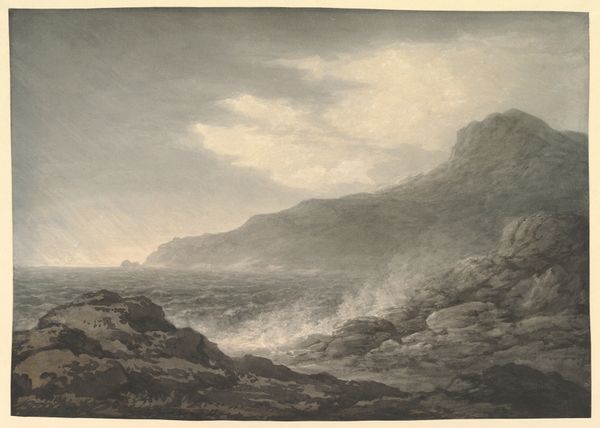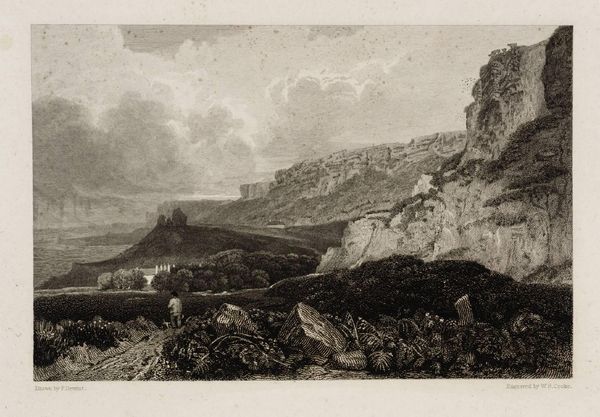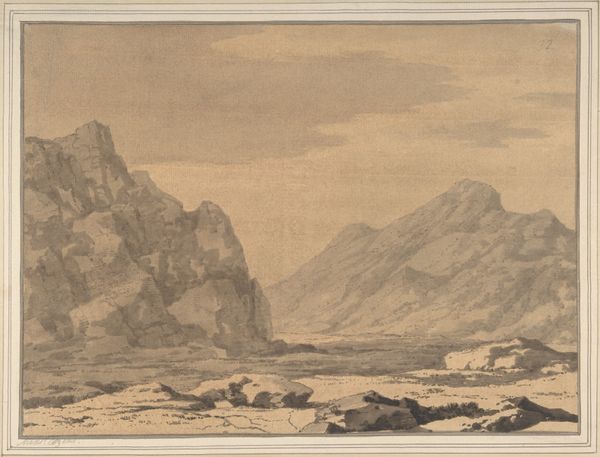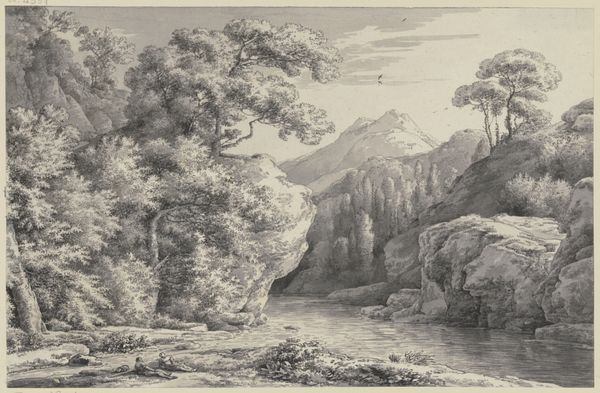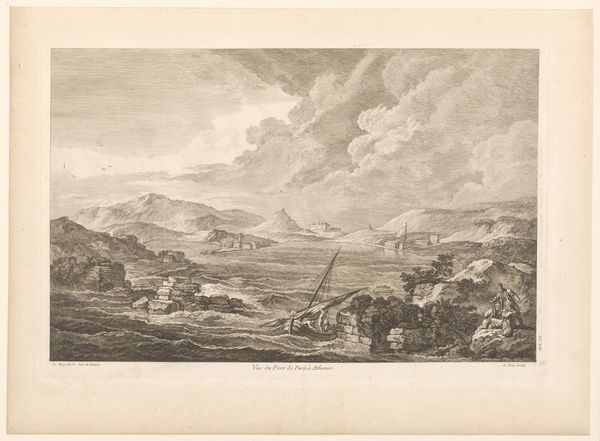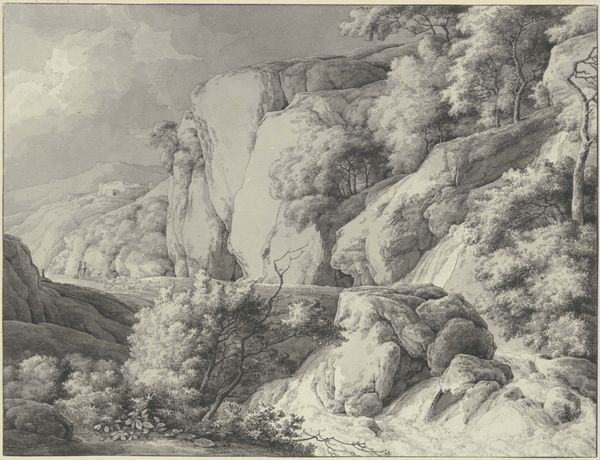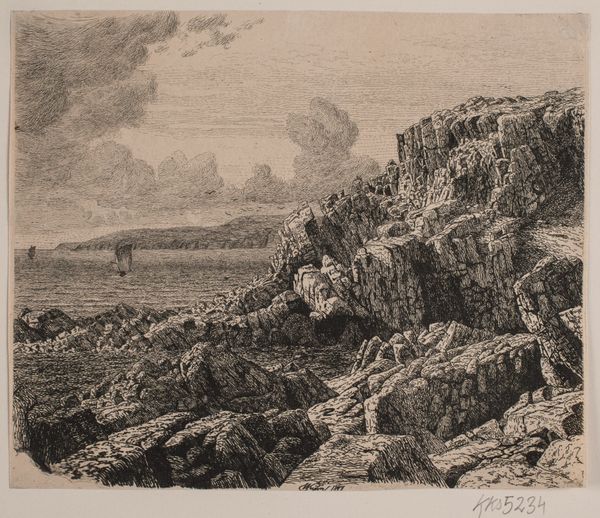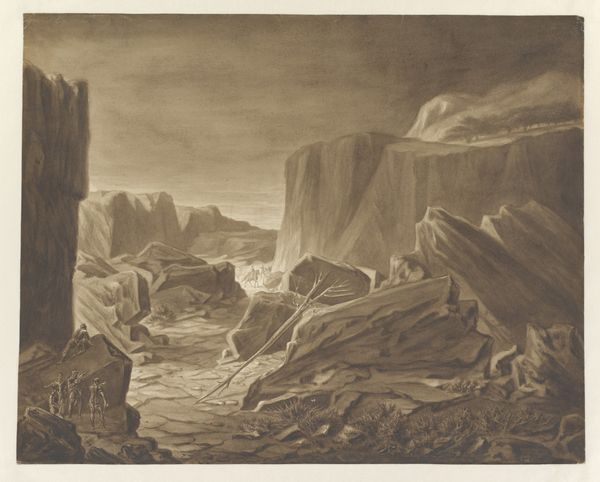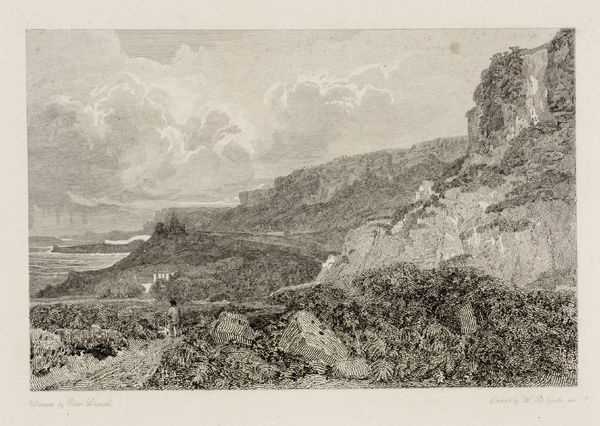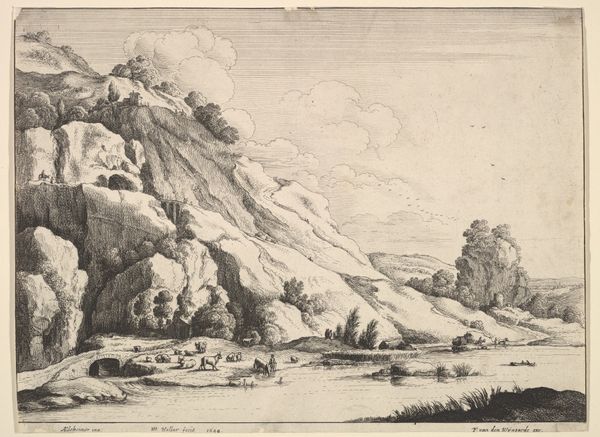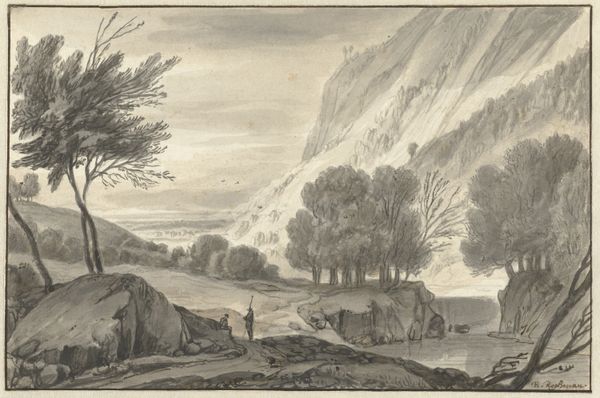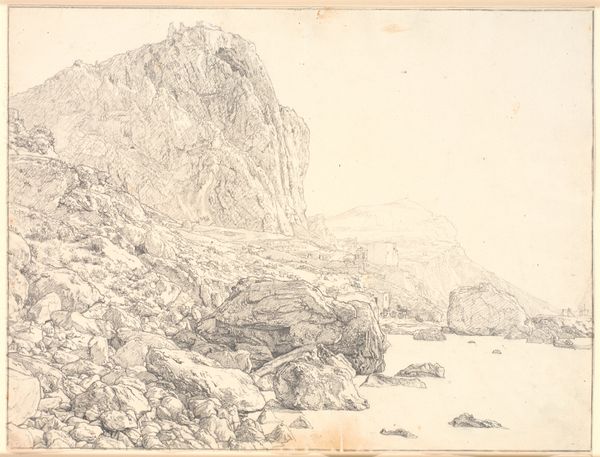
drawing, paper, pencil
#
drawing
#
landscape
#
paper
#
pencil drawing
#
romanticism
#
pencil
Copyright: Public Domain
Louis Gurlitt made this landscape with pen and grey ink wash. This piece chimes with the Romantic movement in 19th century Germany, a movement which saw nature as sublime, untamed, and the antithesis of urban life. The solitary wanderer was a common figure in Romantic art, representing an individual's search for meaning and connection to the natural world. Made during a time of burgeoning industrialization, this landscape could be read as a commentary on the changing social structures of the time. Artists like Gurlitt, by portraying idealized rural scenes, offered an escape from the realities of urban squalor and alienation. This piece might be understood as a form of social critique, yearning for a simpler, more harmonious existence. To fully grasp the social and cultural context of this artwork, one could consult period literature, travel guides, and social histories. These sources can illuminate the contemporary attitudes toward nature, class, and progress, revealing the nuances of the artwork’s commentary on its own time.
Comments
No comments
Be the first to comment and join the conversation on the ultimate creative platform.
